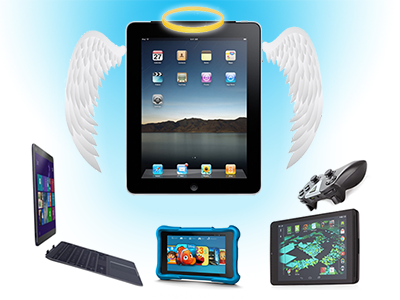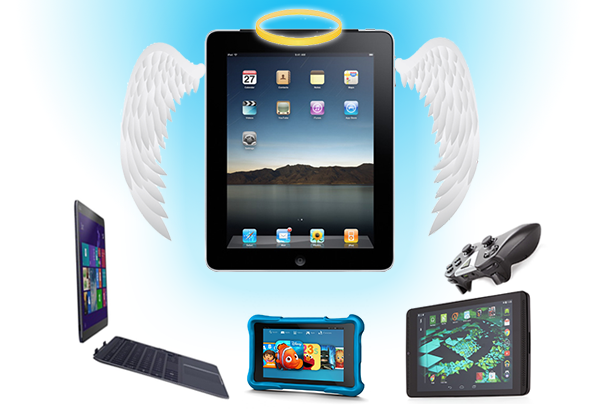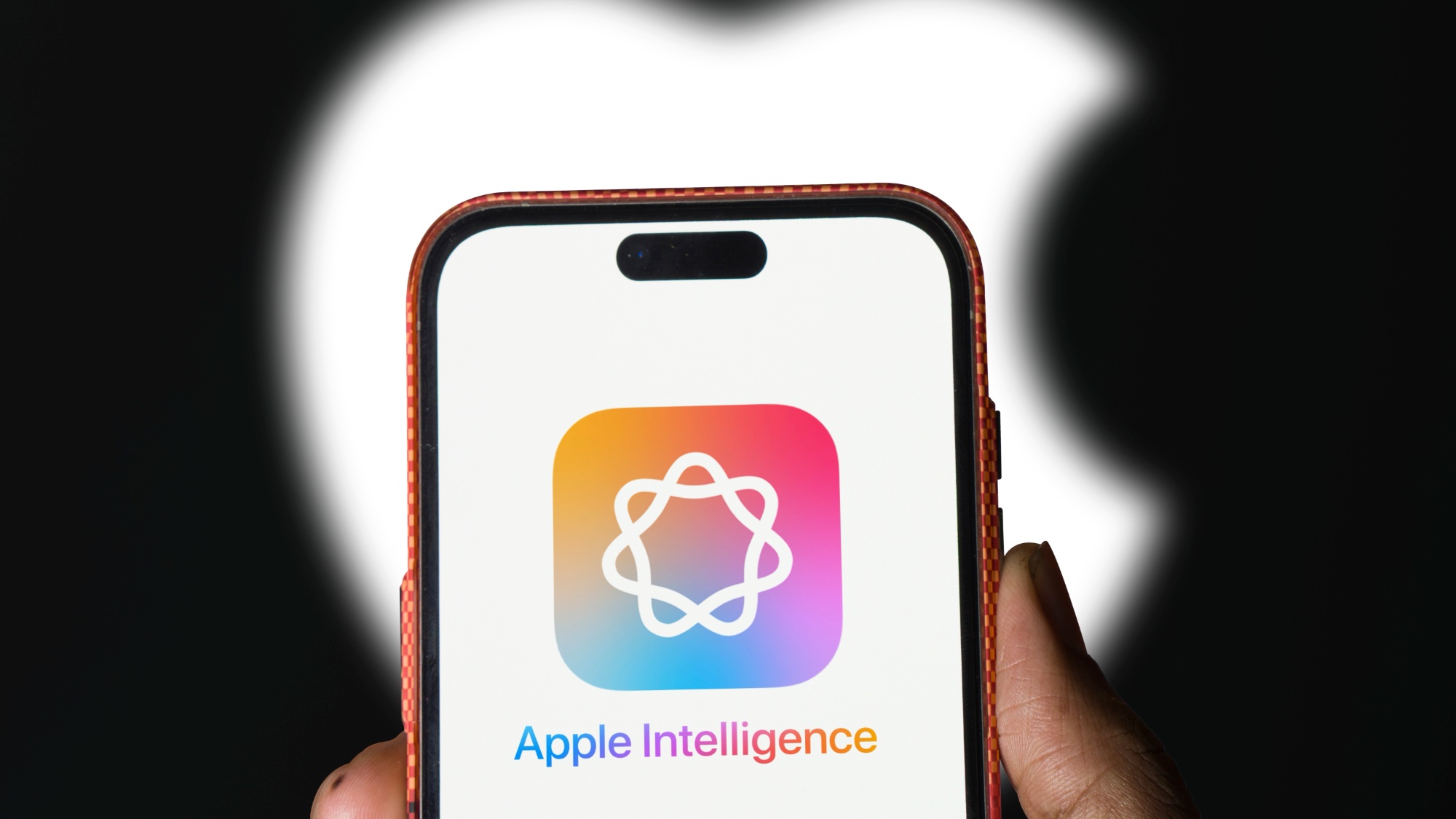The Tablet Is Dead As We Know It - and That's Good
Tablet sales have plummeted, but that doesn't mean the category is toast. It's about innovating to find the right niche.


Most people -- including me -- scoffed when former BlackBerry CEO Thorsten Heins declared in 2013 that the tablet would be dead in five years. Fast forward just two years and his prediction doesn't seem quite as ridiculous. For the first time ever, tablet sales declined year over year during the fourth quarter, according to IDC. In other words, consumers ignored slates during the critical holiday season in favor of other types of gadgets, like fitness trackers, Chromebooks and drones.
As it turns out, tablets aren't dying but finding their niche, which is exactly what this category needs to do to survive.
The Big Fall
Here are some sobering numbers. Four of the top five tablet makers posted double-digit declines in Q4, including Apple. Despite the addition of the iPad Air 2 and the warmed-over refresh that was the iPad mini 3 (whoopee, Touch ID!), the company saw negative growth of nearly 18 percent. Samsung posted comparable figures, although Apple still nearly doubles Sammy in market share (28.1 versus 14.5 percent).
While discussing Apple's otherwise blockbuster quarter -- thanks to the iPhone 6 and 6 Plus -- CEO Tim Cook admitted that the iPad is struggling. "There's probably some level of cannibalization that's going on, with the Mac on one side and the phone on the other." However, Cook remains bullish on the category, especially in regards to the enterprise, where Apple has a strategic partnership in place with IBM.
MORE: Best Tablets on the Market
Speaking of businesses, there may be an iPad Pro on the horizon, which is rumored to offer a larger 12-inch display in addition to better multitasking capabilities in iOS. But according to Jitesh Ubrani, senior research analyst at IDC, it won't be able to reverse Apple's fortunes in this market.
"I think such a device would likely be targeted at the commercial or prosumer space rather than at general consumers," Ubrani said. “And while the commercial market is expected to grow, it still won't account for the majority of the whole tablet market, so I wouldn't be surprised if the iPad Pro were relegated to being a niche market device."
Longer Upgrade Cycles, Less Innovation
Of all tablet makers, Amazon is feeling the most pain right now. The company saw its growth implode by 70 percent year over year. Part of me wonders whether the bomb that was the Fire phone rubbed off on the rest of the company's product line, but Ubrani believes it's much simpler than that. For a while, Amazon had the lower end of the slate market locked up, but then other vendors such as Acer, Asus, E Fun and RCA muscled into its territory.
But there's a bigger issue at play here other than collapsing prices. The novelty has worn off. Everyone who wanted a tablet now owns one, and there just isn't enough of a difference from one generation of tablet to the next to compel shoppers to upgrade. For example, my 10-year-old daughter is perfectly content with her first-generation Amazon Kindle for reading books, playing games and binge-watching old episodes of Full House.
MORE: Best Tablets You Can Buy For Under $200
It seems most consumers feel the same way. Newer tablets have moderately faster CPUs, sharper screens and better cameras. So what? As a result, an increasing number of people are perfectly content to hold onto their slates longer. After all, most if not all of the apps and games they want to use continue to work just fine.
Some are blaming the tablet crash on the rise of phablets, or big-screen phones, but IDC's Ubrani doesn't believe that to be the primary cause. "I would say that longer replacement cycles are likely the larger factor in the slowdown of the tablet market. Phablets are slowly gaining share but we still do not expect them to account for the majority of smartphone shipments." However, it's no coincidence that the share of small tablets is decreasing.
'Nichification' to the Rescue
The most exciting tablet of all of 2014 was the Shield Tablet, because Nvidia found a way to turn a slate into a bona fide gaming console. The company harnesses the power inside its K1 chip to offer great Android performance but also to stream the most demanding games from your PC.
The "nichification" of tablets will continue in 2015, with productivity being the biggest theme. Despite some early miscues, 2-in-1 hybrid devices are starting to resonate with tablet buyers. You get a tablet and laptop in one device, sometimes for a very reasonable price. The Asus Transformer Book T200, for instance, delivers a full Windows experience, a detachable 11-inch slate and a full-size keyboard for less than the price of an iPad.
"We’ve seen substantial growth in the 2-in-1 space," Ubrani said. "Two-in-1s have been growing faster [than traditional tablets] but they are also coming off a small base. For what it's worth, Intel argues that 2-in-1s should be considered its own category.
On the high end of the market, Microsoft's Surface line recently surpassed 1 billion in revenue for a single quarter. Ubrani said that the company will likely crack the top 10 once IDC is done calculating its quarterly figures. But despite some clever marketing, I refuse to buy Microsoft's argument that this tablet can replace your laptop. It's just still too awkward to use as a clamshell in your lap.
MORE: 10 Tablets with the Longest Battery Life
Nevertheless, I’m more optimistic about the 2-in-1 category than I've ever been, thanks to a wave of better designs (like the Lenovo Yoga Pro and the Asus Transformer Book Chi) and the promise of Windows 10. Microsoft's upcoming OS will make switching between laptop and tablet modes more seamless, as well as streamline the entire user experience. The revamped Start menu, Action menu and Settings screens are all steps in the right direction.
Parents who don't want to hand their kids a smartphone -- and pay through the nose for yet another data plan -- is another growing tablet niche. Fuhu has done the best job catering to this crowd with its devices, which focus on learning, parent-approved content and games, and earning rewards for doing your chores. The company sells two big-screen devices (at 20 and 24 inches) with all sorts of creative tools for junior, and a 65-inch device that doubles as a TV is next.
However, older kids may be better off with a Chromebook, which are cheap and come with a full keyboard.
Bottom Line
It looks like the tablet market is coming full circle. The original Microsoft Tablet PC platform aimed for the masses but ultimately found a niche with professionals and field workers because the devices served that audience best. The iPad's launch was a rebirth for the entire category, putting the Web, content and apps right at our fingertips, but now big-screen phones do the same thing. That means tablet makers need to get creative to target more specific segments.
From gaming-focused slates and kids tablets that focus on ease of use and parental controls to big-screen devices optimized for productivity, the tablet isn't dying. It's being reinvented for narrower audiences and uses. While the overall market will probably never bounce back to previous levels, the devices that emerge from this upheaval will be more innovative, practical and fun.
- Best 2-in-1 Tablets and Hybrids
- Windows 10 Preview - Here's How to Get It
- Kids Tablets to Buy (or Avoid)
Mark Spoonauer is the Editor in Chief of Tom's Guide. Follow him at @mspoonauer. Follow Tom's Guide at @tomsguide, on Facebook and on Google+.
Sign up to get the BEST of Tom's Guide direct to your inbox.
Get instant access to breaking news, the hottest reviews, great deals and helpful tips.
Mark Spoonauer is the global editor in chief of Tom's Guide and has covered technology for over 20 years. In addition to overseeing the direction of Tom's Guide, Mark specializes in covering all things mobile, having reviewed dozens of smartphones and other gadgets. He has spoken at key industry events and appears regularly on TV to discuss the latest trends, including Cheddar, Fox Business and other outlets. Mark was previously editor in chief of Laptop Mag, and his work has appeared in Wired, Popular Science and Inc. Follow him on Twitter at @mspoonauer.
-
dextermat The other big problem is most tablets only has 1 gb memory. Put in an antivirus and the tablet get slow and buggy. The cpu hasn't evolve and if you want 1.5 gb memory and a slightly better cpu you need to play twice the price just for that. (ex 1 gb ram dual core 1 ghz = 150 $ - 1.5 gb ram and dual core 1.2 ghz 300$)Reply -
Dyseman They were still using them on the Enterprise. I like all my tablets and have their uses. iPad, Transformer (both droid and windows versions). Keep them on my coffee table and one next to my bed.Reply -
Xivilain I remember seeing iPads bolted down to kiosks in Kohl's (clothing store) before. They were doing slide shows of advertisements. (Inside of the store! Not even outside.)Reply
Worst use of a tablet, ever. -
InvalidError Not so much dead as simply transitioning to a mature/replacement economy since yearly models are increasingly small incremental updates to the previous year's models.Reply
At the lower end, specs have been nearly frozen for more than two years, not much to upgrade to without doubling or tripling the price. -
corwera No wonder. Each "new" tablet has never been that earth shattering special, which makes the market fed up eventually. A tablet is basically a dumb phone without the ability to make calls properly.....Reply
Now, let's give nVIDIA and AMD those <28nm nodes so that we can see some actual innovation in consumer electronics? -
maverickmage Called it.Reply
Tablets lacks the power and overall flexibility of a laptop and the portability of a smart phone. With laptops becoming thinner and lighter and smartphones becoming bigger and stronger, why would anyone opt for a tablet that holds a lukewarm position in between? -
d_kuhn I think the iPad has been slipping because Apple made a strategic decision to limit it's capabilities to avoid cannibalizing their laptop business. With one of the earlier versions I had a kb/mouse setup with the iPad that made it a moderately competent little ultracompact web machine - but Apple doesn't like you using mice on iOS devices, and they've never seemed open to giving the iPad the ability to be used as a productivity tool instead of just a media consumption tool. That's why I've got a Surface Pro now... not an iPad. And that's why Microsoft's tablet business doubled last year as Apple's slipped.Reply -
jakjawagon ReplyTwo-in-1s have been growing faster but they are also coming off a small base.
I see what you did there. -
godnodog Or people arnot buying new tablets for the same reason why pc sales have stalled, the ones they have suits their needs, they may not see any real advantage of the new devices over the old ones, or they may have realized that a tablet is not a pc replacement, either way I don't see thiss market dying any time soonReply

